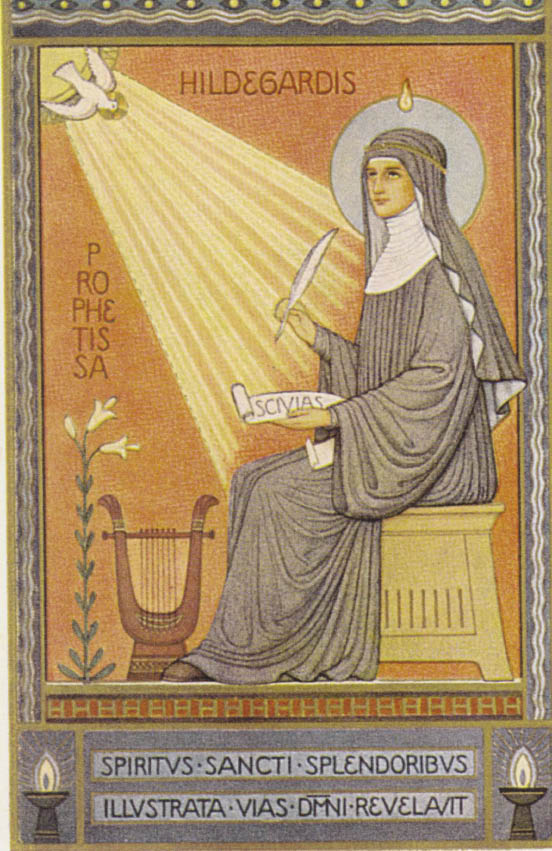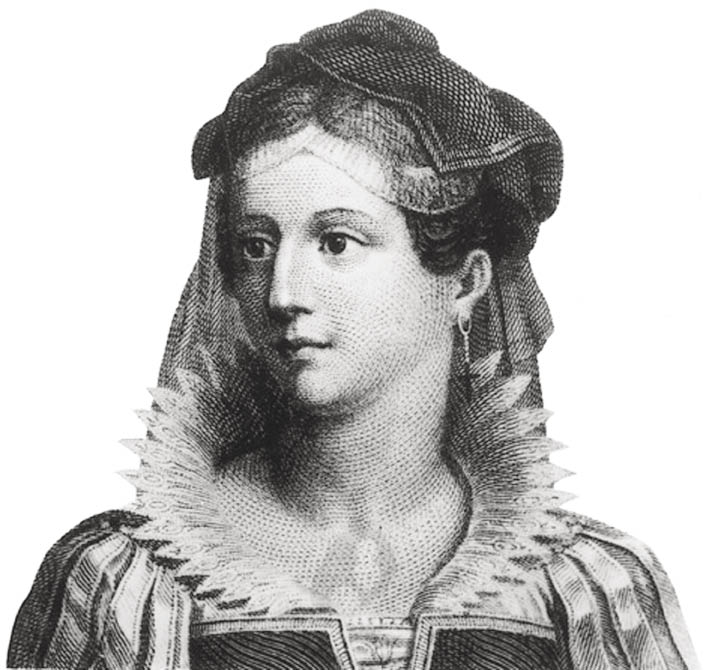Women are remembered in History, with a capital H, and in
the history of culture, literature, philosophy, art and music in only a
few rare instances. Except for women saints because more often than not
they symbolize virtues that, in the past, had to distinguish the female
figure. Only today, as part of a new historical awareness, this universe
is being looked into and there is evidence that, since the earliest times,
it was densely populated by figures that stood out for their originality
and creative force. Among them, Hildegard von Bingen, a Benedictine abbess
born in 1098 near Mainz was truly incredible and "alternative" for
her time: author, musician, mystic, artist, dramatist, healer, linguist,
naturalist, philosopher, poet, political advisor, and prophetess.
It
is easy to understand, by reading this list only, how much space would be
needed to give even a small idea of the multiplicity of interests this
woman had, corresponding with popes and emperors of her time, strong in
her classical and scientific knowledge, author of visionary texts
characterized by their spiritual nature (Scivias , Book of
Life's Merits, Book of Divine Works), of texts on natural
sciences relating to the medical and botanical knowledge of the time
(Physica and Causes and Cures), and linguistics
(Lingua ignota, 1180) proposing the creation of a universal
language (this is why she is the patron of scholars of Esperanto) in
a splendid illuminated manuscript.
As a composer, she wrote the words
and music of 77 sacred pieces and many liturgical songs that
were collected into a cycled called the Symphonia armoniae celestium
revelationum. Hildegard the musician (the first female musician in
the history of Christianity) is interesting particularly here because
her conception regarding music is so original and all-encompassing that it
is considered by some to have formed the basis of modern music therapy.
To her, music is the only art form able to connect mind,
heart and body: it is a type of unique and comprehensive "medicine" to
re-balance the concrete and the spiritual and to reproduce in the
microcosm of our being the "symphony", which is the harmony created by the
movement of spheres in the universe.
This complete union of energies
is crucial such as were the musical instruments, forbidden by the precepts
that ruled the performance of liturgical music because they were typical
of secular music, each one having a specific function with a special
meaning. The drum represents discipline; the flute the breath of the
Spirit; the trumpet, the voice of prophets, motivating action; the strings
symbolize the soul's earthly condition and the hard work to
return to the light, their sound arousing emotions from our heart;
the harp is the instrument of happiness; the psaltery (stringed musical
instrument) represents the unity between the firmament and the earth; and,
finally, the organ, the prince of harmonies, draws together the
community.
After extensive activities that had her travel throughout
Germany, Hildegard will die in 1179 in the monastery she founded. Few
relics were preserved of this abbess, an "environmentalist" who for the
first time embraced together nature and culture, philosophy and humanity,
spirit and matter, art and science.
Finally, after more than nine
centuries since her death, she was given the recognition she deserved:
Pope Benedict XVI identified her as the cultural icon of her time, and
between May and October 2012, she was canonized and conferred the title of
Doctor of the Church for her cultural uniqueness and the originality of
her thinking.

